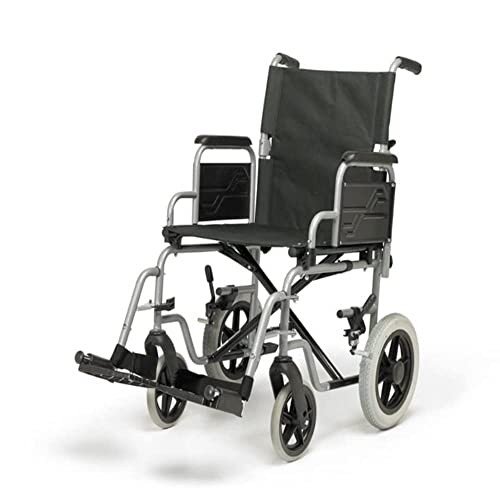The 10 Scariest Things About Mobility Scooters
페이지 정보
작성자 Spencer 작성일25-06-18 20:41 조회314회관련링크
본문
Navigating the World of Mobility Scooters: A Comprehensive Guide
In an era where mobility is progressively acknowledged as an essential aspect of lifestyle, the demand for assistive gadgets has risen. Amongst these, mobility scooters stand out as a versatile and empowering option for people with mobility challenges. This comprehensive guide digs into the world of mobility scooters, using insights into their types, benefits, purchasing considerations, and maintenance tips.
Understanding Mobility Scooters
Mobility scooters are motorized lorries developed to help people with mobility concerns in moving around more easily and independently. They are particularly beneficial for those who discover strolling challenging due to conditions such as arthritis, multiple sclerosis, or post-surgical recovery. Unlike manual wheelchairs, mobility scooters need very little physical effort, making them an outstanding option for extended use.
Kinds Of Mobility Scooters
Three-Wheel Scooters
- Pros: More maneuverable, lighter, and easier to keep.
- Cons: Less stable on rough terrain.
- Best For: Indoor and smooth outdoor surfaces.
Four-Wheel Scooters
- Pros: More stable, much better on rough terrain, and can bring much heavier loads.
- Cons: Bulkier and less maneuverable.
- Best For: Outdoor use, particularly in parks and on irregular surfaces.
Portable Scooters
- Pros: Lightweight, foldable, and simple to transportation.
- Cons: Limited variety and speed.
- Best For: Travel and occasional use.
Heavy-Duty Scooters
- Pros: Built to deal with heavier users and rugged environments.
- Cons: More pricey and less portable.
- Best For: Users over 300 pounds or those who need to browse rough terrain.
Standing Scooters
- Pros: Provide a standing position, which can be useful for users who can not sit for extended periods.
- Cons: Limited stability and range.
- Best For: Users who choose standing and require short-distance support.
Advantages of Mobility Scooters
Improved Independence
- Mobility scooters permit users to take a trip longer ranges without tiredness, enabling them to participate more completely in everyday activities and gatherings.
Improved Safety
- With features like safety belt, anti-tip wheels, and brake systems, mobility scooters offer a more secure option to manual wheelchairs and walking help.
Comfort and Support
- Adjustable seats, backrests, and armrests ensure a comfy ride, decreasing the stress on the user's body.
Cost-efficient
- While the initial investment can be significant, mobility scooters are often more cost-efficient in the long run compared to frequent taxi trips or specialized transport services.
Social Inclusion
- Mobility scooters assist in greater social interaction by enabling users to participate in neighborhood activities and maintain a more active lifestyle.
Factors to Consider When Buying a Mobility Scooter
User Needs and Abilities
- Examine the user's physical condition, mobility requirements, and daily activities to figure out the most suitable kind of scooter.
Size and Weight Capacity
- Ensure the scooter can accommodate the user's size and weight comfortably and safely.
Variety and Speed
- Consider the typical distance and speed needed for day-to-day use. Some scooters have a series of up to 30 miles on a single charge.
Portability
- If travel is a top priority, select a portable scooter that can be easily taken apart and transferred.
Maintenance and Support
- Pick a trusted maker that provides reputable customer care and upkeep assistance.
Budget
- Set a budget and check out alternatives that offer the best worth for money. Think about funding options and possible insurance coverage.
Maintenance Tips for Mobility Scooters
Regular Cleaning
- Clean the scooter regularly to prevent dirt and particles from affecting its efficiency. Use a soft cloth and moderate detergent.
Battery Maintenance
- Follow the maker's standards for battery charging and maintenance. Regularly inspect the battery level and avoid deep discharges.
Tire Inspection
- Examine the tires for wear and appropriate inflation. Replace or repair as required to guarantee a smooth and safe ride.
Lubrication
- Oil moving parts such as the chain and equipments to lower friction and avoid wear.
Expert Servicing
- Arrange regular expert servicing to deal with any concerns and make sure the scooter remains in optimal condition.
Frequently Asked Questions About Mobility Scooters
Are mobility scooters covered by insurance coverage?
- Some insurance plans, consisting of Medicare, may cover the expense of mobility scooters under particular conditions. Contact your provider for particular details.
Can I utilize a mobility scooter inside your home?
- Yes, numerous mobility scooters are created for both indoor and outside use. Ensure the scooter is ideal for the kind of surfaces you will be navigating.
How fast can mobility scooters for sale near me scooters go?
- The speed varies by design, but a lot of mobility scooters have a maximum speed of 4 to 8 miles per hour.
Do I require a license to run a mobility scooter?
- In the majority of nations, a license is not needed to run a mobility scooter. Nevertheless, it is necessary to follow local guidelines and traffic laws.
Can I travel with a mobility scooter?
- Many mobility scooters are created to be portable and can be taken apart for travel. Talk to airlines and transport providers for specific requirements.
Mobility scooters are a transformative tool for people with mobility challenges, providing a blend of self-reliance, safety, and comfort. By comprehending the various kinds of scooters, thinking about crucial purchasing aspects, and following upkeep best practices, users can take advantage of their mobility scooter and lead a more active and fulfilling life. Whether for day-to-day commutes or leisurely trips, a well-chosen mobility scooter can be an important buddy on the journey to improved mobility and quality of life.

